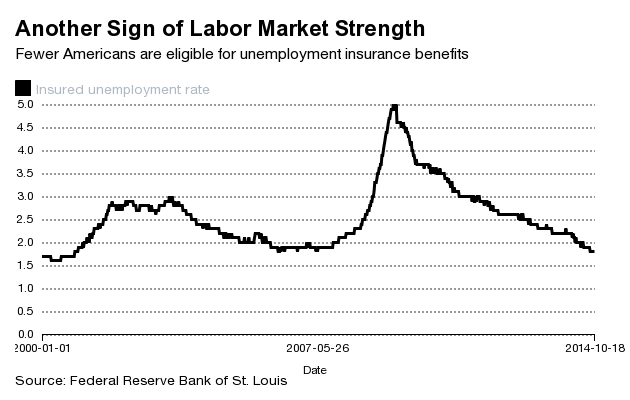The Jobless Rate Could Fall to 4.7 Percent by the End of 2015
By Peter Coy
November 05, 2014 - Businessweek
If current trends continue, the U.S. unemployment rate could get down to 4.7
percent by the end of next year—low enough that labor shortages could begin to
drive wages up too rapidly and cause inflation, concludes an analysis by a Wall
Street economist.
Joseph LaVorgna, chief U.S. economist at Deutsche Bank Securities, cited
whatfs known as the insured unemployment rate, which he said is a leading
indicator of the ordinary unemployment rate. In other words, when the insured
rate changes, you can be pretty sure the ordinary rate will change soon
after—and in the same direction.

The insured rate is the share of the labor force thatfs eligible to receive
unemployment insurance. Itfs lower than the ordinary unemployment rate, which is
the share of the labor force thatfs out of work and actively seeking a job. The
insured rate peaked at 4.9 percent in May-June 2009; four months later, the
ordinary unemployment rate peaked at 10 percent. The insured rate has since
fallen to only 1.8 percent, compared to 5.9 percent for the ordinary
unemployment rate in September. The last time the insured unemployment rate was
this low, the ordinary unemployment rate was just 4.6 percent.
gOur best guess is that as the unemployment rate trends lower over the next
couple of quarters, wage pressures will begin to trend noticeably higher,h
LaVorgna wrote in a note to clients. gIn turn, this will provide the impetus for
a liftoff in the fed funds rate around the middle of next year.h